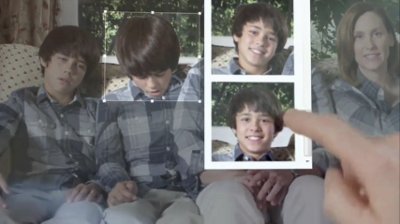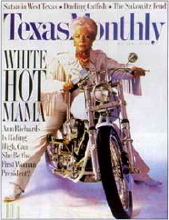Tech Tuesday: The Family Photo Lie
This past holiday season, Microsoft aired a warning about the future of family photographs by trying to convince people to use editing software to lie.
A family fidgeted on a couch, annoyingly looking to the side, looking down while texting, sticking an action figure in an ear, “Dad” getting up to remove said action figure. And “Mom”, after taking the photos, casually used software to change heads among the shots, “and swap in some smiles.” She then went on to publish it online (Facebook).
I can only imagine what that family would be like during the earliest years of photography, when people had to hold still for 20-30 minutes — a major explanation for the seated, leaning, and flat-stare photos of the time. At least portrait painters and their subjects could take breaks between multiple sittings.
Family photos are meant to represent the true images of the family at that moment. Certain things that had traditionally been done in the darkroom — adjusting spot or whole-shot exposures, for example — don’t affect that, though others can. Modern methods like “red eye correction” (a compromise for on-camera flash effects) might approach an ethical line, particularly if it changes the subject’s visible iris color.
The fashion industry prompted much of this through the years. Plenty of sites detail the before-and-after efforts to make an image of a model “perfect” for publication, sometimes to humorous effect. It’s even worse when it happens in the guise of news profiles, where the breaches are more than only artistic.
There are too many other examples, but the swapped heads of this TV spot brought to mind one in particular. A published composite of the swapped head of former Texas Governor Ann Richards and a model on a motorcycle brought up ethical concerns over photographic lies. John Long, National Press Photographers Association Ethics Co-Chair, responded (in the linked NPPA article, “Ethics in the Age of Digital Photography”):
“[M]y feeling is that no amount of captioning can forgive a visual lie. […] We have an obligation to history to leave behind us a collection of real photographs.”
While Richards herself stated that she liked the cover, that doesn’t make it true.
As family historians, this casual shrugging off of real photographs and preference for the lie of digital head swapping should give us a significant pause. How long will it be before clothing, hair styles, accessories, and background become insufficient to approximate the date of the uncaptioned photos in our collections? Instead of the obvious cut-photo collages of the past, we’re in the era when we need to look closely at necklines and other signals in the photos themselves for evidence of tampering.
According to the TV spot, these days software, “gives me the family nature never could.”
I just heard memories of my grandfather scoffing at such phoniness: “Ah, puppets!”
What do you think? Do you prefer your family photos to be fashion-“perfect” alterations, or historically “real”?





